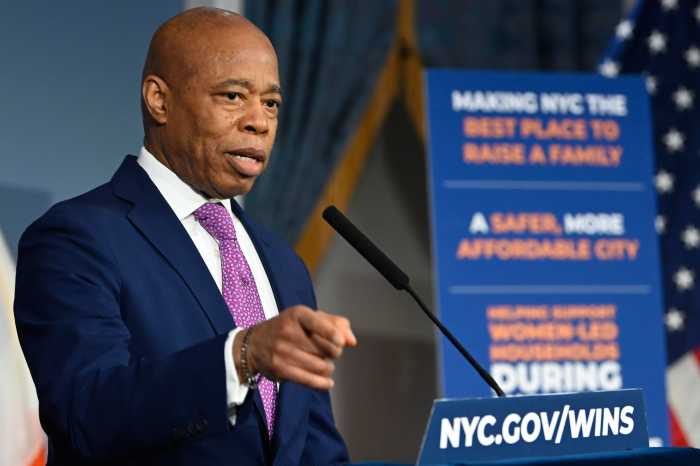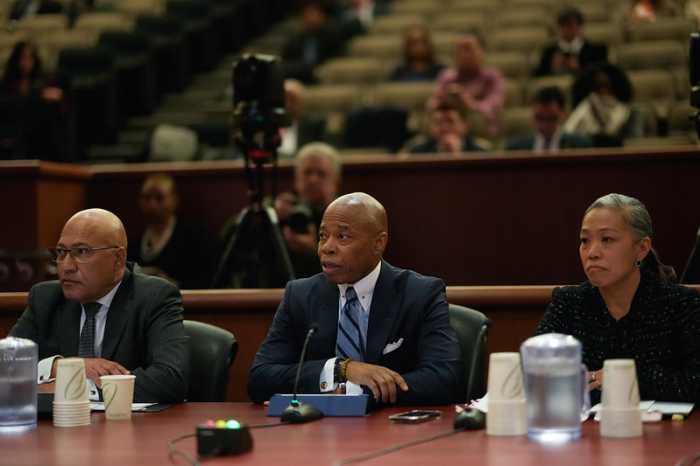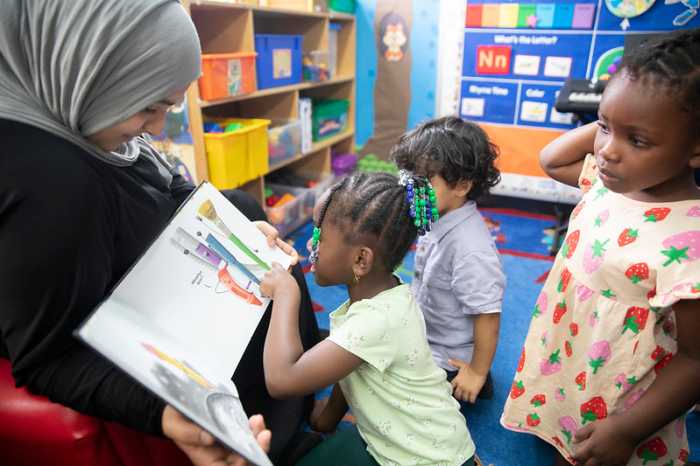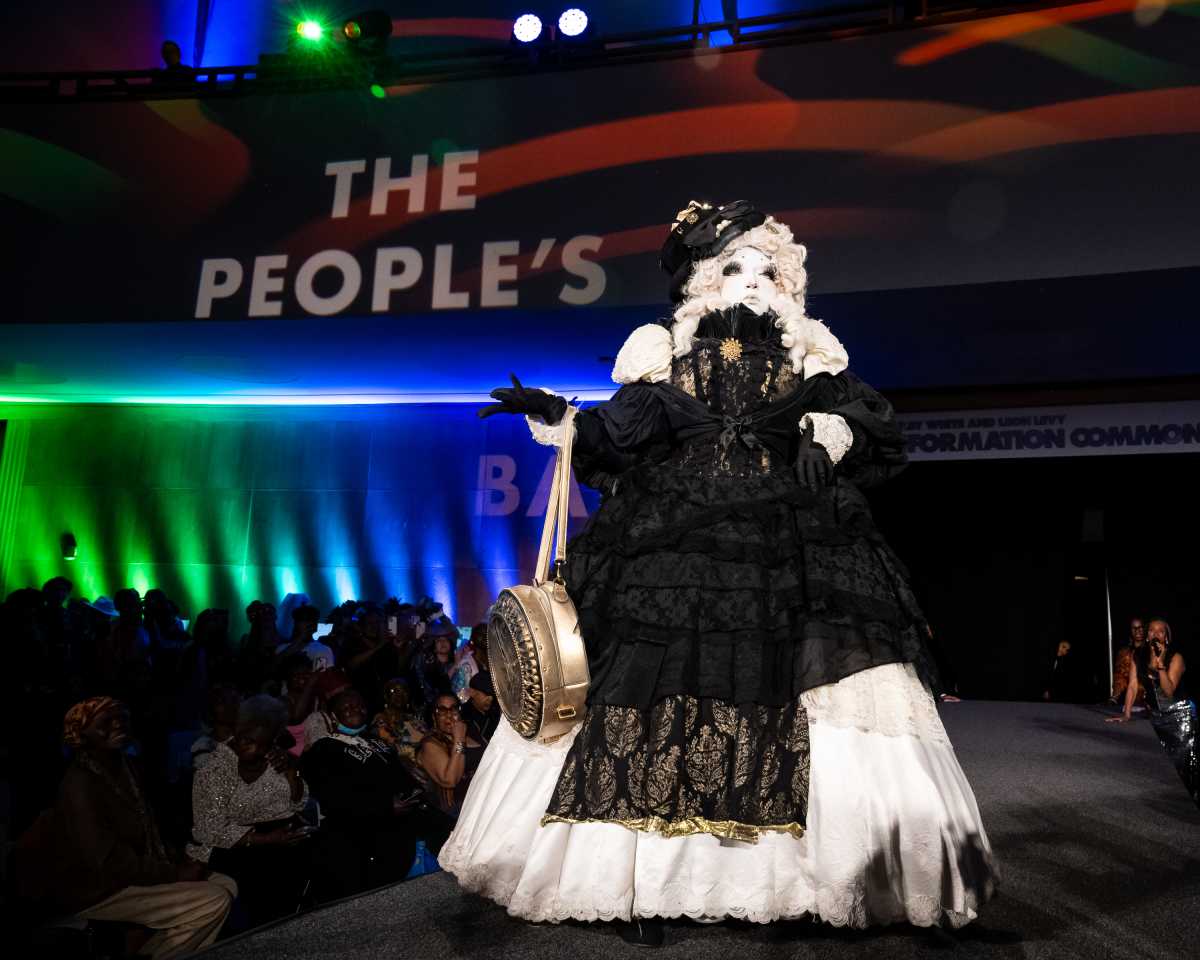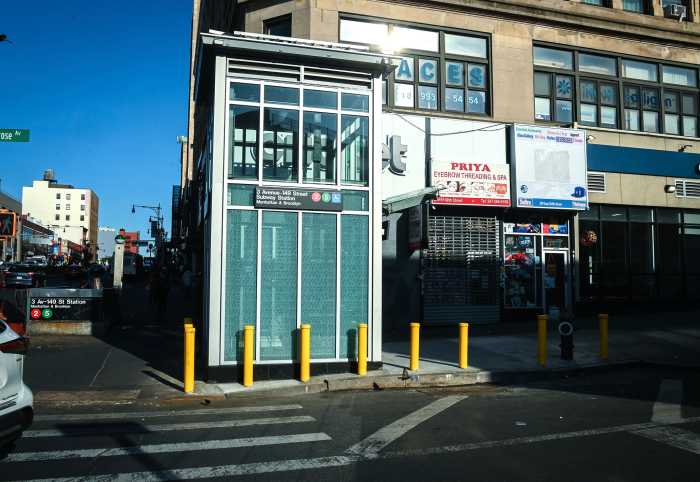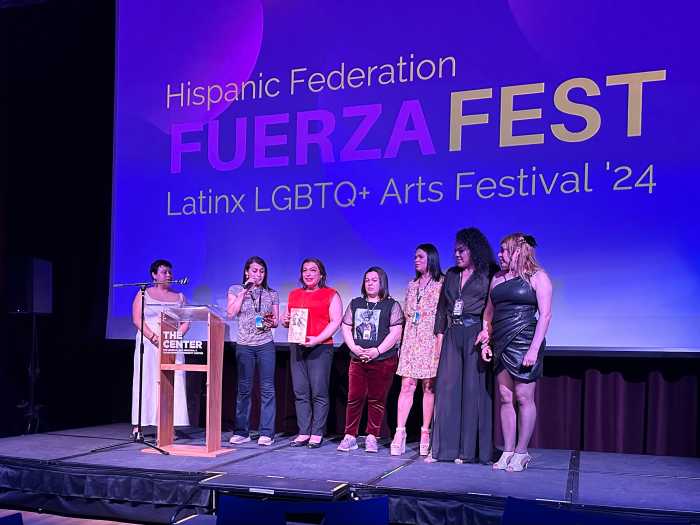Mayor Eric Adams unveiled his $115 billion Executive Budget for the coming fiscal year on Thursday, a plan is flush with new spending as he faces a steep uphill re-election battle this year.
Hizzoner rolled out his balanced Fiscal Year 2026 executive budget during a May 1 press conference at his alma mater of Bayside High School in Queens.
The mayor’s spending plan is up roughly $600 million from his $114.5 billion preliminary budget released in January and $3 billion from the Fiscal Year 2025 budget adopted last June. It comes at a time when the city faces President Trump’s threats of large-scale federal funding cuts and the looming possiblity of a recession, but does not add any new funds to the city’s $8.5 billion in reserves to the chagrin of several pols and good government groups.
Adams has been framing the fiscal blueprint as the “best budget ever,” one that will help working-class New Yorkers like the students who attend Bayside High School and his late mother, Dorothy Mae Adams-Streeter. The framing dovetails with Adams’ re-election platform focussed on affordability and public safety.
“When my team and I came together to develop this budget, I thought of my younger self and how my mother worked three jobs just to put food on the table for me and my siblings,” Adams said during his Thursday budget address. “She was betrayed by the city. This budget is for her and it’s for young Eric, who struggled in life and in school. And for all of you, this budget makes sure that you don’t have to struggle the way that me and my family did.”

With the release of Adams’ executive budget, negotiations will begin in earnest between his office and the City Council over the final shape of the spending plan, which must be passed by a July 1 deadline. The two sides of City Hall have had hard-fought battles over the budget in years past, a dynamic that could be exacerbated by City Council Speaker Adrienne Adams’ bid to unseat Mayor Adams, to whom she is not related, in this year’s election.
In a departure from Adams’ previous budget announcements, many of which were marked by his wide-ranging cuts aimed at offsetting the city’s massive spending on migrants, he has made his re-election-year budget rollout a celebratory affair. Adams claims he is able to spend more on popular city programs this year because of his “strong fiscal management,” better than expected tax revenue, and success in cutting spending on the migrant crisis.
The mayor’s Budget Director Jacques Jiha said they are also using money gleaned from past savings and tax revenues to cover $1 billion the city expected in migrant aid from the state that Gov. Kathy Hochul did not deliver.
However, City Council leaders have often argued Adams made cuts unnecessarilly because the city had enough money in its coffers all along. The plan still does not fully restore some funding cuts to levels championed by the City Council in its own budget plan released last month.
Speaker Adams and Council Finance Chair Justin Brannan, in a joint statement, said Mayor Adams’ budget “for the first time” funds many of the priorities they included in their fiscal plan.
“This is how the budget process should work, but it’s disappointing that it took three years for this administration to become tired of being entirely on the wrong side of doing right by New Yorkers,” they said. “There remains work to fill gaps in funding for programs left out of this budget, but this is a better start from the Executive Budget than past years.”
The mayor’s rosiest budget presentation to date comes as he makes a long-shot bid for a second term in the November general election, after opting out of the Democratic primary and deciding to run as an independent. He is seeking to show New Yorkers why they should give him another four years in City Hall amid record-low job approval rating numbers and in the aftermath of his now-dismissed federal indictment.
Before releasing the full budget on Thursday, Adams made separate announcements in which he touted its investments in supportive housing and tenant protection programs, the addition of free after-school seats in a new push to make the initiative universal, and the boosting of NYPD headcount to 35,000 next fall with new funding and policy changes .
According to City Hall, the plan also commits $199 million in recurring funding—known as baselining—for education programs that were previously supported by now-expired COVID-19 stimulus dollars. The funding will go towards arts education in schools, teacher recruitment, and a mentorship program called “Project Pivot,“ among other areas.
Furthermore, the budget allocates $1.4 billion in baselined fundinf for programs that were not funded in the upcoming fiscal year. Those areas include savings for CUNY, continuing the current level of litter basket collection, and increasing funding for cultural institutions.
Although the plan allocates $15.7 million in new funding for the city’s three library systems, a frequent target of Adams’ budget cuts in previous cycles, it still does not reach the $62.5 million the council pushed for.
The budget also restores dollars to areas where Adams previously made cuts and baselines the funding going forward. Those include $167 million for the city’s 3-K and universal Pre-K programs and $112 million in funding for senior centers and home-delivered meals.
But that amount falls short of the $197 million the council says is needed for both 3-K and universal pre-K special education seats.




